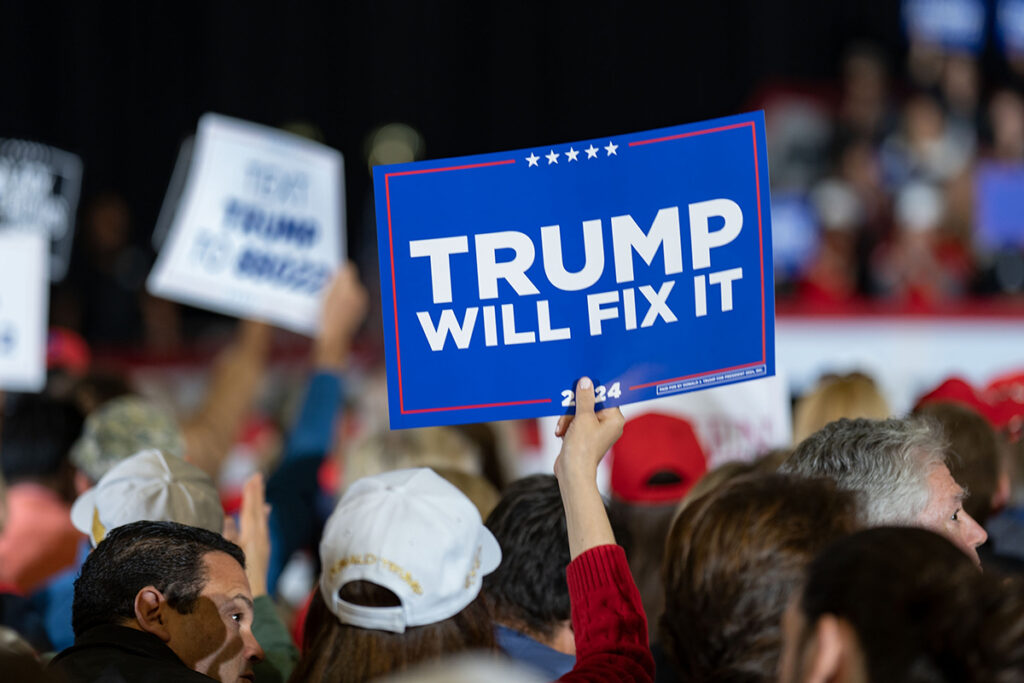The U.S. prepares for sweeping import taxes as allies and economists raise concerns over inflation, jobs, and global trade.
A Bold Promise With High Economic Stakes
President Donald Trump is calling April 2 “Liberation Day”, the moment he plans to enact a sweeping set of tariffs that he says will “free the United States from foreign goods.” The policy, however, is surrounded by uncertainty and mounting global concern.
Though details remain scarce, Trump has pledged a range of import taxes, including “reciprocal” tariffs targeting countries such as the European Union, South Korea, Brazil, India, Mexico, Canada, and China. These would match or exceed what the U.S. perceives as unfair foreign trade practices and subsidies.
Trump has already enacted a 25% auto tariff, asserting that the U.S. has been “ripped off” by trade imbalances. “We’re going to charge countries for doing business in our country,” he said, adding that foreign car prices rising would be welcome, as it would make American-made cars more competitive.
The administration also plans to tax pharmaceutical drugs, copper, lumber, and oil imported from Venezuela. China faces a 20% tariff over its role in fentanyl production. Trump has expanded existing steel and aluminum duties to 25% on all imports, reinforcing his long-held commitment to protectionist trade policies.
Consumer Costs and Economic Warnings
While Trump frames the move as national redemption, economists warn the tariffs will harm American families. Most analysts agree that businesses will pass the cost to consumers, raising prices on autos, groceries, housing, and other goods. Corporate profits could shrink, and economic growth could slow significantly.
According to Art Laffer, a Trump-aligned economist, auto tariffs could raise the cost per vehicle by $4,711. Goldman Sachs projects that U.S. economic growth will fall to 0.6% this quarter, down from 2.4% at the end of 2024.
In Columbus, Ohio, Mayor Andrew Ginther warned that tariffs on materials could increase the median home cost by $21,000, deepening the housing affordability crisis. Meanwhile, White House trade adviser Peter Navarro estimated that tariffs will raise $700 billion per year, calling it a historic shift in revenue policy.
Still, not all administration officials agree on the impact. Treasury Secretary Scott Bessent suggested the policy would result in a one-time price adjustment, not prolonged inflation. But analysts like Samuel Rines at WisdomTree see a broader risk: if goods become more expensive, services like auto repair and insurance could soon follow.
Allies Push Back on Economic Consequences
Foreign leaders are voicing opposition, viewing Trump’s approach as disruptive and economically damaging. Canadian Prime Minister Mark Carney stated that Trump’s moves have effectively ended their economic partnership. Canada has already announced retaliatory tariffs.
French President Emmanuel Macron called the tariffs “not coherent,” saying they risk breaking value chains, creating inflation, and destroying jobs on both sides of the Atlantic. He emphasized that France would resist the measures “with the goal of dismantling the tariffs.”
Mexican President Claudia Sheinbaum has not announced reciprocal tariffs but emphasized the importance of protecting Mexican jobs. Meanwhile, China condemned the strategy outright. Foreign Ministry spokesperson Guo Jiakun warned that Trump’s actions would harm the global trading system, stating, “There are no winners in trade wars.”
The Meaning Behind “Liberation Day”
April 2 marks at least the third time Trump has used the term “Liberation Day.” He previously applied it to the 2024 election and his January 2025 inauguration. This repetition reflects the central role tariffs play in Trump’s economic vision—one that has shaped his public messaging since the 1980s.
But public sentiment appears less enthusiastic. Consumer confidence has dropped, and stock markets remain volatile. Critics argue that the economic pain from tariffs could outweigh any long-term benefits Trump envisions.
“I don’t see anything positive about Liberation Day,” said Phillip Braun, a finance professor at Northwestern University’s Kellogg School of Management. “It’s going to hurt the U.S. economy. Other countries are going to retaliate.”
While Trump has left the door open to negotiating down some of the tariffs, observers believe the real test begins this week. As CEOs are summoned to the White House to discuss investments and trade strategy, the world will be watching how much economic disruption this new phase of Trump’s policy brings—and how long “Liberation Day” truly lasts.



